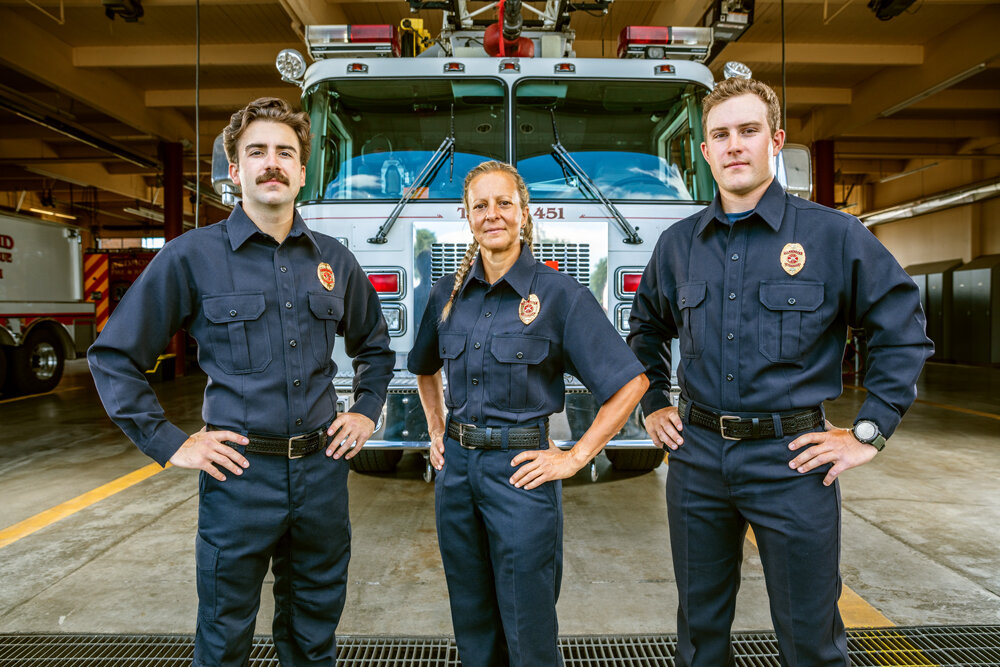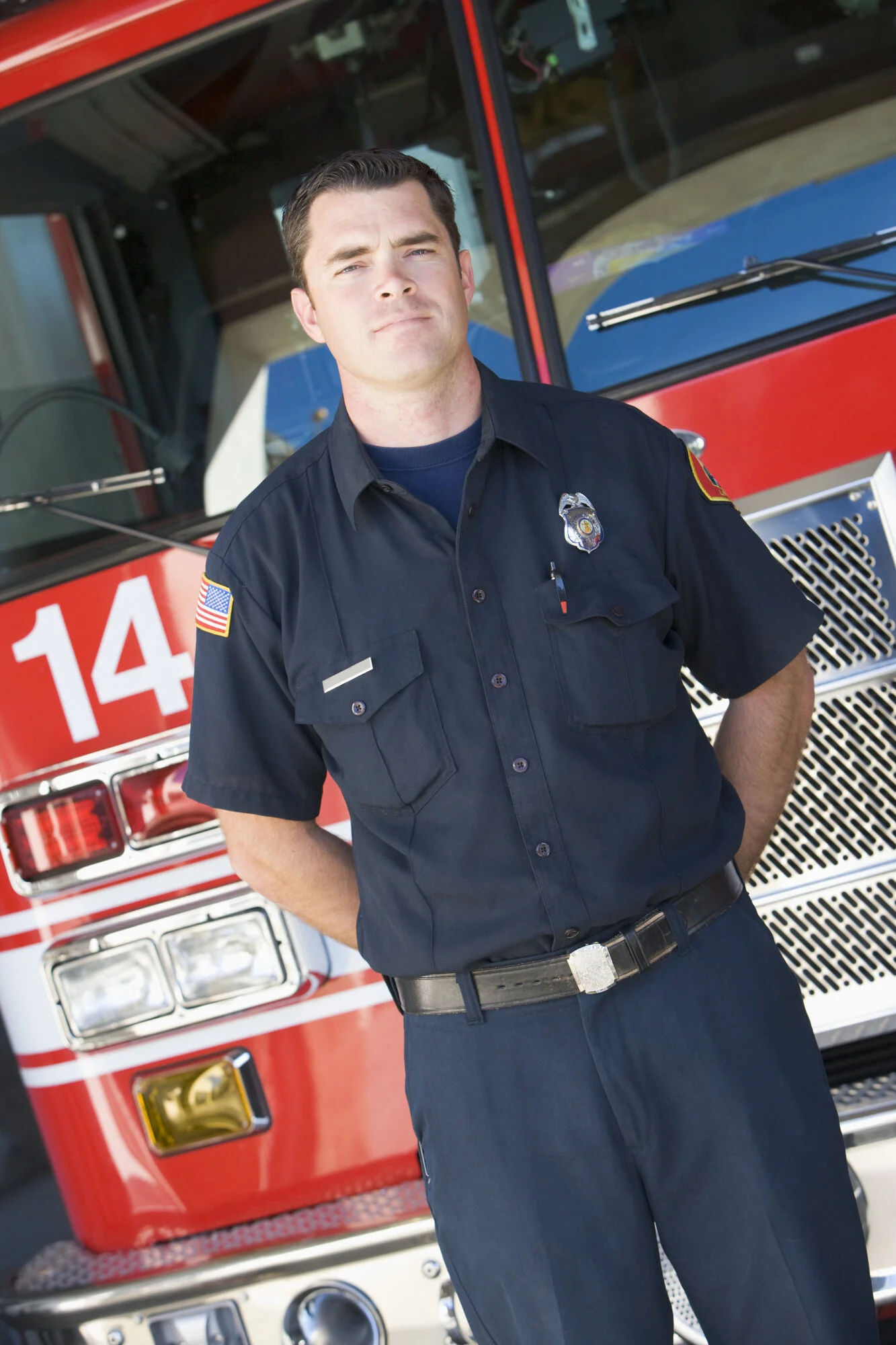Fire station uniforms are a critical part of the firefighters’ protection equipment. It is essential to keep them safe from the many different hazards that can arise while in the line of duty. For this reason, they must wear proper regulation fire uniform gear designed with breathability, flame and heat-resistance, and lightweight fabric materials.
To know more about the firefighter station uniforms, this article discusses the basic parts of a firefighter station wear, the high-quality features of known brands used in the industry, and a brief walkthrough on the NFPA 1975 standards.
Firefighter Station Uniform
Firefighters wear a station uniform in between work shifts at the office. Their work apparel is also made of protective materials against fire hazards to prepare them for an emergency that might occur at any moment, which has three basic parts: shirt, pants, and boots.
Shirt
These collared shirts come in white, black, or blue color. It can be short or long-sleeved, depending on the department regulations and if the occasion calls for it.
Pants
The station pants are often either in black or blue color. They are made with the same materials as the shirts to make the firefighters appear more professional in their workwear.
Boots
The boots are also an essential part of the fire station clothing. They’re usually the black combat shoes commonly worn by health and safety officers.
Their station wear looks formal, compared to their emergency apparel. However, firefighters can also use their station uniforms under their fire protective garments in a fire situation.
Do firefighters have dress uniforms?
Firefighters do have dress uniforms, which they use for different occasions in line with their work. Their uniforms have different classes that should meet the requirements of the department and standard regulatory guidelines for proper personnel dress code.
Tecasafe Firefighter Station Wear
Tecasafe is a TenCate trademark flame-resistant (FR) fabric with exceptional flash fire and arc flash protection with lightweight and extremely comfortable features.
Here are some of the things you need to know about the Tecasafe firefighter station uniform.
TenCate is a known brand for its flame-resistant fabrics designed for personnel regularly exposed to heat and fire hazards in their field of work. Their station uniform fabrics are specially made for firefighters because of their comfortable and durable features.
Since the Tecasafe firefighter uniform has been designed specifically for a fire station, it has a lot of extra features that come in handy.
Soft and comfortable to wear with effective moisture-wicking technology
Infused with hypoallergenic materials without a toxic chemical finish
Has longer life-cycle compared to cotton or cotton-blend textiles
Maintains a distinguished appearance even after going through multiple industrial laundering
Nomex Firefighter Station Wear
Nomex® is a DuPont registered trademark for being made from the family of aromatic polyamide (aramid) fibers. It consists of continuous filament yarns, paper, staple fibers, and spunlace fabrics.
The brand is one of the most well-known and sought after firefighting uniforms worldwide. Their apparel is highly equipped with a protective design that can last a long time due to its durability. The company has developed a nylon fabric that has an extremely long-lasting and sturdy characteristic.
What makes Nomex different?
“Unlike flame-retardant treated (FRT) materials, Nomex® fibers are inherently flame resistant. It will not diminish during the life of the fiber, and it cannot be washed out or worn away.” -Nomex® Fiber Technical Guide
This means that Nomex has created a product line that can protect its wearer from all types of injuries, not just burns. Even after years of wear and tear, the Nomex firefighter uniform will remain in top condition.
Indeed, Nomex is a company known for creating high quality and dependable products suitable for firefighters.
Check out our NFPA 1975 approved firefighter station wear shirts and pants manufactured by the industry’s best brands. Visit our store here today!
Overview of NFPA 1975 Standard on Station/Work Uniforms For Fire and Emergency Services
Purpose
“The purpose of this standard shall be to provide members of the fire and emergency services with station/work uniforms that will not contribute to burn injury severity.”
Scope
This standard specifies the “minimum performance and certification requirements and test methods for textiles and other materials used in the construction of station/work uniforms suited for fire and emergency services personnel.”
Certification of firefighter station uniforms to the NFPA 1975 standard requirements “shall not impede certification to additional primary protective garment standards where the garments meet each standard’s requirements”; and that “it applies to the manufacturer and certification processes of new station wear garments/uniforms.”
What type of uniform does NFPA 1975 describe?
The need for flame-resistant (FR) clothing is a necessity for all firefighting personnel.
During the approval of station wear regulations, one of the members of the committee stated that: “Non-FR garments as station/work uniforms would increase possibilities of skin burn and serious injuries. Allowing non-FR puts us back in providing protection to our firefighter.”
One of the committee’s recommendations states that “Where station/work uniforms are constructed with flame-resistant fabrics, all thread utilized in station/work garments shall be of inherently flame-resistant fiber, and sample specimens shall not melt when tested.”
And the resolution from the above recommendation ended up with:
“The flame resistance requirement eliminates all non FR fabrics from being suitable for station/work uniforms. The committee has stated that these uniforms are not ’primary protective garments’; therefore, 100 percent of natural fiber materials should be allowed for station/work uniforms. The cost, availability, and comfort of 100 percent cotton clothing, along with the reasonable level of thermal stability, make these very desirable for the fire service. Many (most) fire departments ignore NFPA 1975 because the garments compliant with NFPA 1975 are costly and uncomfortable. The committee has not demonstrated any reason that 100 percent cotton garments are a danger to firefighters when used as ’non-primary protective garments’.”
NFPA 1975 has done a great deal to ensure that firefighter’s work uniforms do not contribute to the severity of burns or other injuries that a firefighter might receive in the line of duty. In 1985, when NFPA 1975 was first issued, 100 percent polyester firefighter uniforms were standardized. The use of polyester in station/work uniforms has dramatically decreased in the past ten years, substantially increasing firefighters’ safety. This safety improvement is directly attributable to NFPA 1975.
Contact us to know more about our NFPA 1975 certified firefighter station uniforms!














